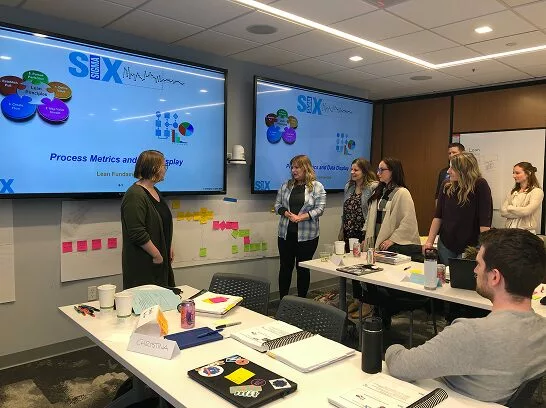Effective Brainstorming With Affinity Diagrams
Brainstorming sessions and the affinity diagram or tree diagram go together well. With it, teams can control the brainstorming process and systemically tackle a recurring issue efficiently and effectively.
The tree diagram works by allowing the project team to brainstorm a lot of ideas and group them homogenous into categories. This allows the team to identify patterns and relationships from different points of view in order to come up with a lasting solution for the problem at hand.
How to Draw an Affinity Diagram
To use the affinity diagram effectively in a brainstorming session, your team needs to know how to draw one. Here are the steps:
Step #1: Define the problem
The definition of the problem should be simple and easy to understand – it does not need to have a lot of detail. As long as it can convey the nature of the problem being observed, the definition can be as broad as it can be.
Step #2: Come up with ideas
Since the problem has been defined, it is up to the team members to generate some ideas. How did the problem occur? Where did it occur? When did it occur? These are the things the team should focus on instead of asking why it occurred.
Step #3: document the ideas
Everyone must write down their idea on a separate piece of paper. They should ensure that their idea has been defined clearly and concisely. Then, all the ideas should be compiled and placed on a board (sticky notes work best for this) or in the middle of a table.
Sort #4: Sort the ideas
In this step, the team will select ideas that are related and put them in a category that best describes them. The point here is not to discuss the ideas but just to sort them – there will be plenty of time for discussions afterward. Make sure the categories are not pre-planned but are discovered organically during the course of the discussion. You should restrict the number of categories to five.
Step #5: Look for a common theme
This is the part where the ideas are discussed in order to determine a common theme within that category. This is a chance to further sort the ideas since team members can present arguments for why an idea belongs or doesn’t belong in a particular category.
Step #6: Draw the diagram
The final step is to draw the affinity diagram now that all the ideas are written down and sorted into their respective categories. If there are ideas that are duplicates, see if you can combine them into one. The diagram will allow the team to assign a level of importance to the categories. This will give them an indication of where to channel their process improvement efforts to achieve success.
Conclusion
The affinity diagram is one of the most useful tools in Six Sigma, according to many experts. Anytime there is a need for brainstorming ideas to eliminate a problem, it comes in handy. As long as the team knows how to draw it, they can easily visual categories of related ideas that can help with process improvement.
SixSigma.us offers both Live Virtual classes as well as Online Self-Paced training. Most option includes access to the same great Master Black Belt instructors that teach our World Class in-person sessions. Sign-up today!
Virtual Classroom Training Programs Self-Paced Online Training Programs







